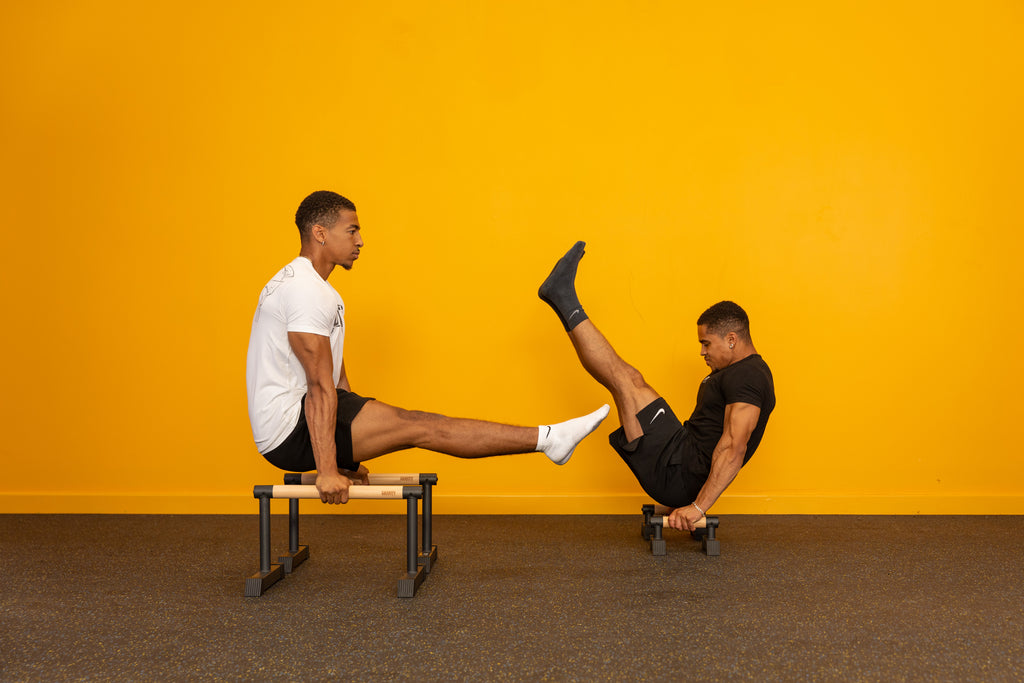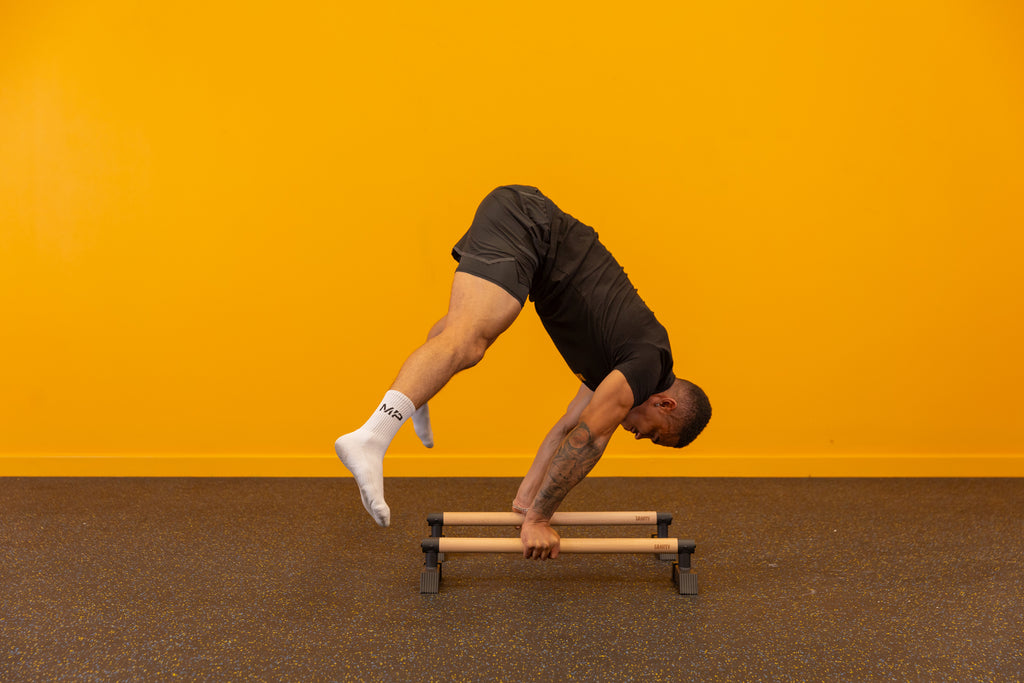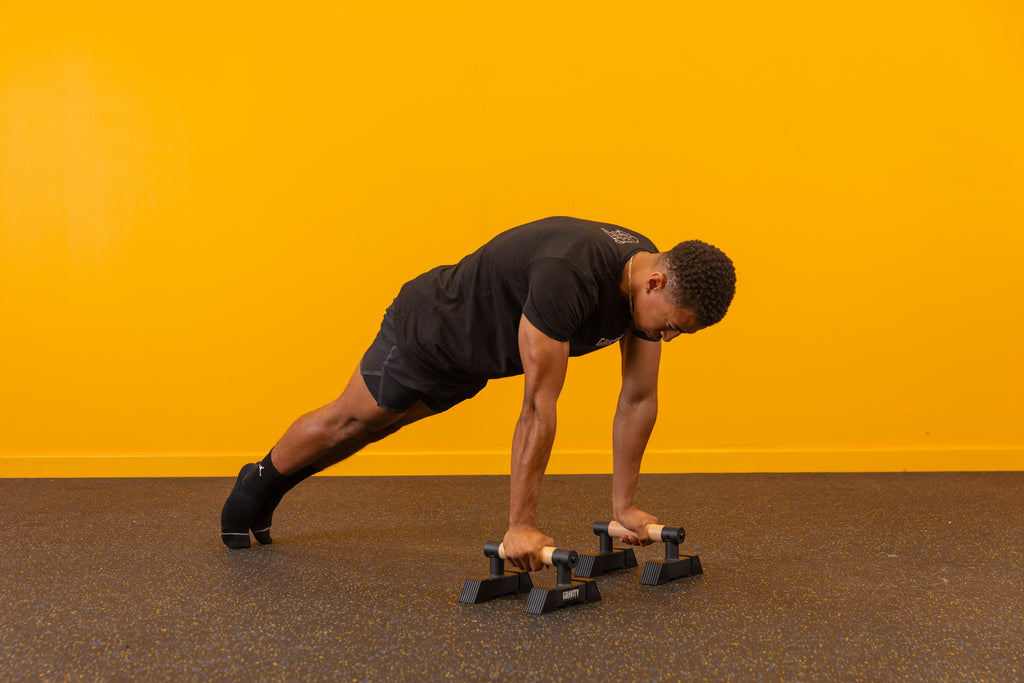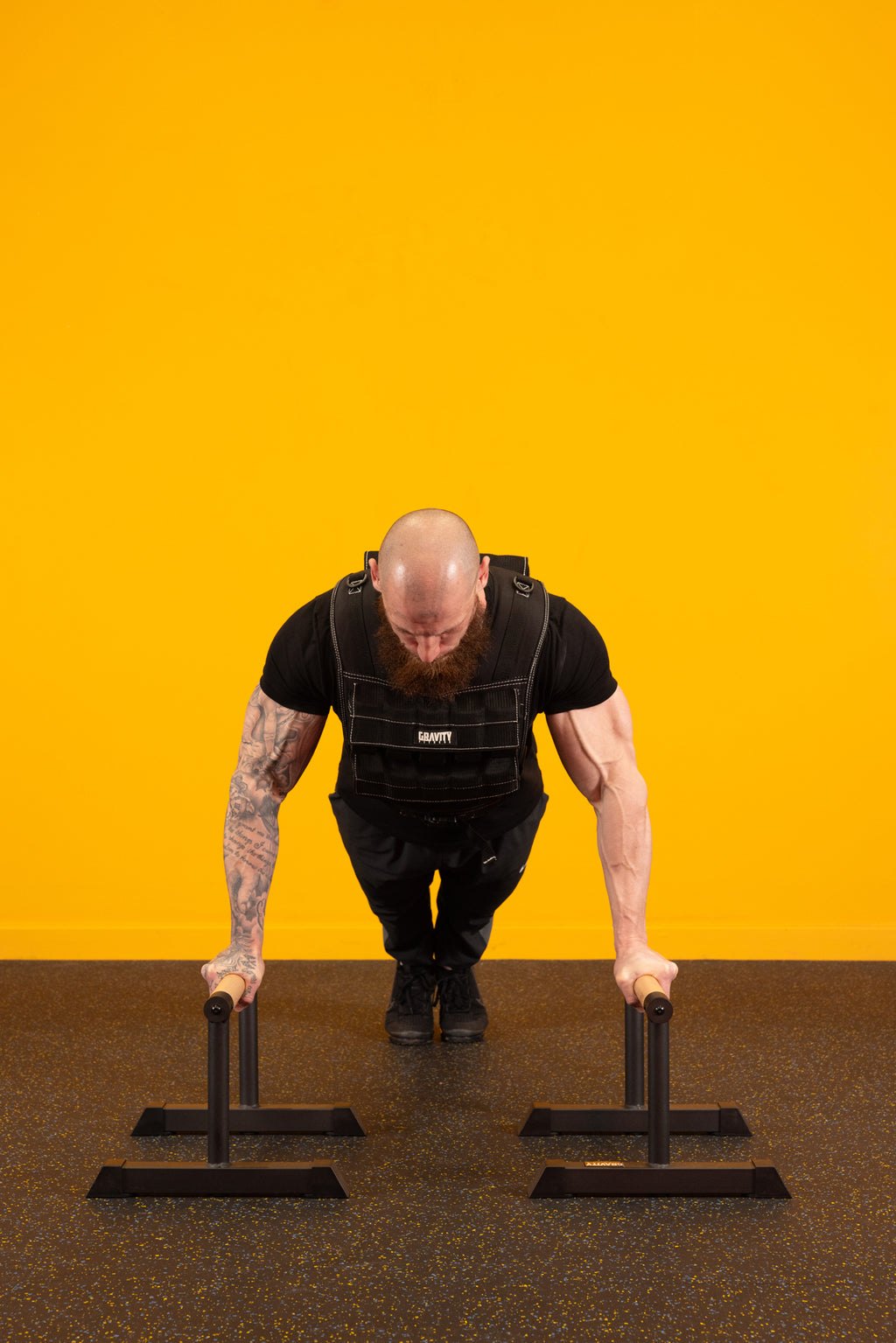
Parallettes Buyers Guide

1. What Are Parallettes and Who Are They For?
Parallettes are portable bars used to elevate your body during push-ups, dips, L-sits, and advanced calisthenics skills. Think of them as mini parallel bars — only compact, sturdy, and incredibly versatile.
Who are they for?
Anyone who trains with bodyweight — from beginners learning basic push-ups to advanced athletes working towards planches, handstands, or deep-range dips. Whether you're training indoors or outside, parallettes let you build strength, control, and range of motion without a gym.
2. Are Parallettes Effective? (Why Train with Them)
Yes — parallettes unlock more strength, mobility, and stability than flat-ground bodyweight work alone. Elevating your hands allows for deeper movement, greater joint engagement, and advanced skill development.
Benefits include:
• Deeper push-ups and dips for increased muscle activation
• L-sits, tuck holds, and planche progressions for core and shoulder control
• Reduced wrist strain vs. flat-floor training
• Compact and travel-friendly for consistent training anywhere

3. Types of Parallettes (And Which One Is Right for You)
By Size:
Parallettes: Ultra-compact, perfect for floor work, L-sits, and portable training. Not tall enough for dips.
• Medium Parallettes: The most versatile option. Low enough for push-ups, high enough for knee tucks and core work. Best all-round size.
• XL Parallettes: Taller design ideal for dips, rows, and deep full-body exercises. Great for those wanting more strength-based movement.
By Material:
• Plastic Push-Up Stands: Lightweight and cheap, but often unstable and uncomfortable. Poor grip and low durability. Not suitable for serious training.
• All-Steel Parallettes: Durable, rigid, and solid — but the bare steel can get slippery, especially during sweaty workouts.
• All-Wood Parallettes: Great grip and feel, but less durable under heavy load or outdoor use.
• Gravity’s Hybrid (Wooden Handles + Steel Base): The best of both worlds — steel strength with the sweat-absorbing, non-slip grip of natural wood. Ideal for performance and comfort.
4. Is One Set of Parallettes Enough? (How to Choose the Right Ones)
The key is to choose based on how and where you train:
• Limited space or travel: Go for travel-size or medium
• Skill training (L-sits, handstands, planche): Mediums give the best balance
• Strength-focused workouts (dips, rows, deep push-ups): XL Parallettes are your go-to
• Want to progress through it all: Many Gravity users own two sizes — medium for skills, XL for strength
And remember — build quality matters. A set that wobbles or chips under pressure isn't worth it. Gravity parallettes are powder-coated steel with laser-cut frames, built for lifetime use.

5. What Are the Downsides of Parallettes? (And Who Should Avoid Them)
Parallettes are powerful tools, but there are a few caveats:
• Beginners may find them unstable at first — focus on mastering bodyweight floor movements first
• Cheap plastic versions often slip or crack
• Not ideal if you have wrist or shoulder injuries (though they’re often better than floor work for reducing wrist strain)
Used properly, they’re a joint-friendly way to train — but bad form, poor-quality kit, or skipping progressions can still lead to injury.
6. How Often Should You Use Parallettes?
• Beginners: 2–3x per week alongside other bodyweight training
• Intermediate/Advanced: Use them in most sessions — for warm-ups, strength work, or skill progression

7. What Exercises Work Best with Parallettes?
Here’s what you can do — even with a single set:
• Push Strength: Push-ups, tricep dips, planche leans
• Pull Variations (XL only): Bodyweight rows, inverted curls
• Core: L-sits, tuck holds, shoot-throughs
• Skill Work: Handstand holds, planche progressions, crow pose
• Mobility: Elevated stretches and dynamic movement
With a weighted vest (like Gravity’s 10–30kg range), parallettes become even more powerful.
8. What Equipment Works Well with Parallettes?
Level up your calisthenics setup with:
• Weighted Vests: Add resistance to push-ups, dips, and L-sits
• Pull-Up Bars: Train vertical pulling and transition into muscle-up progressions
• Resistance Bands: Use for assisted holds, mobility drills, or planche leans
• Gymnastics Rings: Pair with parallettes for instability work and creative flows











